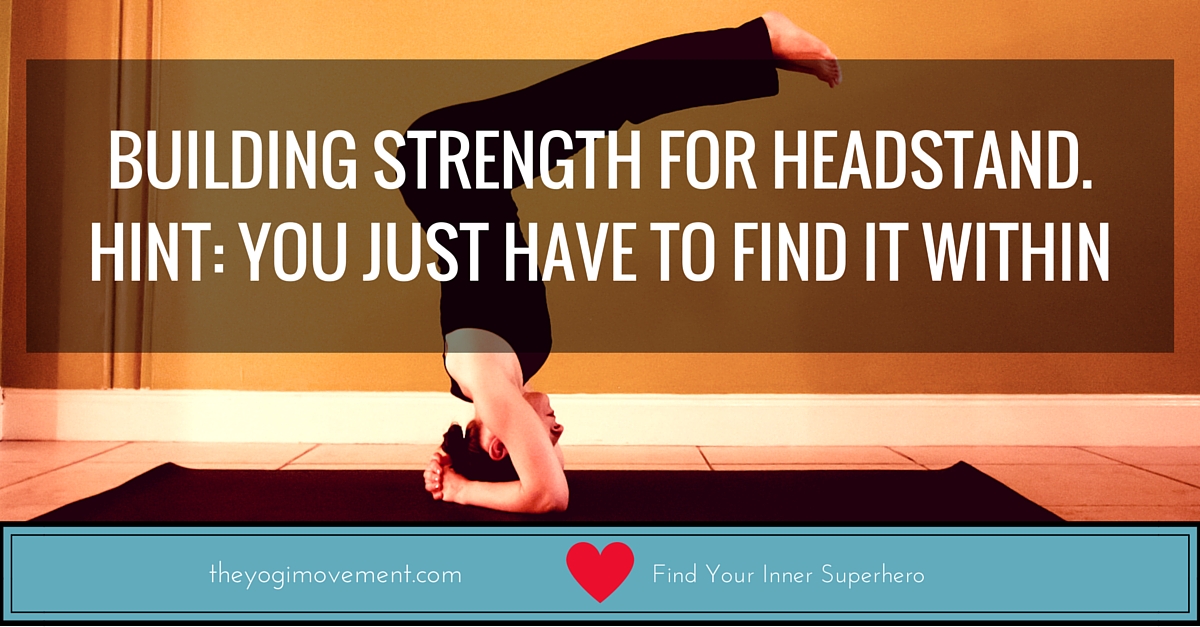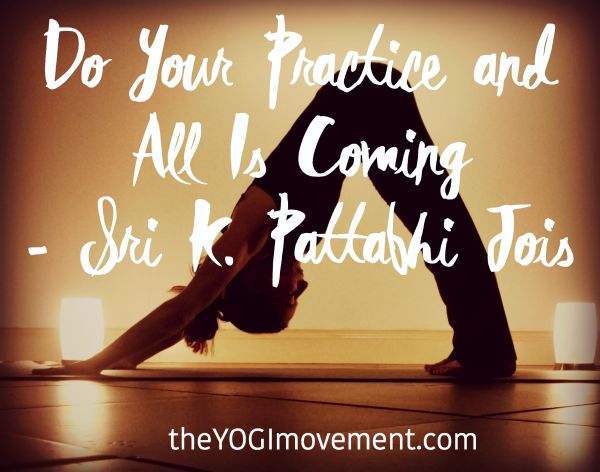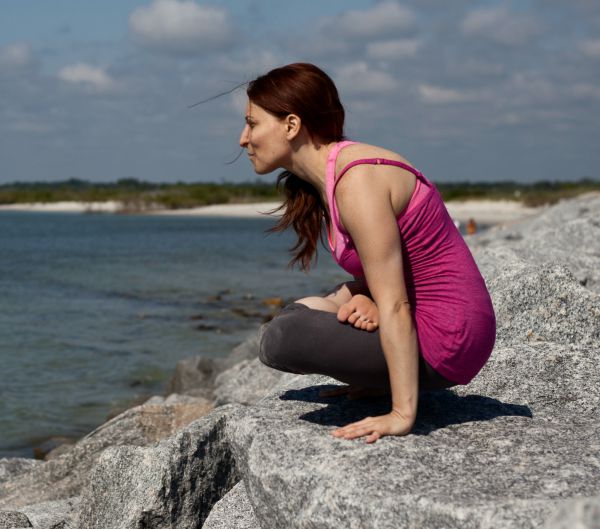The last post and video I created for headstand was about getting over your fear of falling, and with step-by-step directions on how to float into it. Although this video had an amazing response, and is the most visited post to date, I didn’t cover some of the most important aspects of headstand.
So many people already have the strength to get into headstand, but have a fear of falling or injury. The truth is that once you take the first fall, you realize it wasn’t so bad and you try again.
Babies don’t learn how to walk in one day, right?
They take their first step. Then they fall. They try again. They try over and over until they’re able to take a few more steps each day. During this process, the baby builds inner confidence, and strength in the legs. That’s what allows them to hold themselves up for longer periods. (I’m sure more goes into it, but I think that’s the basic gist.)
Think of your Ashtanga Practice as the rebirth process for your mind and body. Every day we commit to getting on the mat, and reliving the same postures over and over. We start off in the dark, and as we start to move the body and work with the mind, we move towards the light.
Then, we become stronger, more authentic, and closer to our oneness with the universe. We end our practice in final resting posture, which mimics the shape of a corpse.
Then, we wake up and do it all over again.
So, if we can think of each posture preparing us for the next one, just like how we learn something from each life experience, then we can either choose to use that to propel us forward in our practice, or not listen and stay stuck right where we are.
I bring this up because headstand comes at the very end of the practice, and my new video talks about three key aspects you can utilize in your current practice to help build strength for headstand.
Just like a baby practices consistently over a period of time to take that first step, if you practice consistently with devotion, you will learn headstand.
Here’s what’s going on in headstand:
♥ The arms, back, and shoulders provide structural support.
♥ The bandhas and core muscles create a lightness within. You want to strengthen your abdomen, but to float into headstand, so you’ll need to bring the awareness to Mula and Uddiyana Bandha.
♥ You’re pressing your forearms, hands, and wrists into the ground, and pushing through the strength at the shoulders.
♥ All the weight is in your arms and shoulders. There is NO weight on your head.
Headstand Don’ts:
⇒ Don’t jump or kick.
⇒ Don’t use a wall.
The reason for this is because headstand is not about the destination. It’s about the process. If you just try to jump up into it, you’re not building the foundation.
If you don’t have a foundation, you can really hurt your neck. You need to have the strength to NOT carry any weight in your head.
Your Home Practice Homework:
1) Surya
Are you jumping back and jumping forward in Sun Salutations? If not, you’re missing out on building strength. If you’re not jumping, then that’s your first homework assignment. If you have been jumping, then take the next step and try to float back and forward. Your goal is to just try.
- Press your hands strong into the ground. Pretend you’re a tree and really root them.
- Engage your shoulders and upper back.
- Connect with your bandhas, and engage your core muscles.
- Now, jump a little bit, but try to hold yourself in the air for a split second before jumping into plank. Just try.
You don’t need to hold yourself in the air, but just start utilizing those muscles to build the strength in your upper body.
2) The Jump Back and Jump Through (Vinyasa):
This is another area in your practice you can really work on building strength in the upper body.
This is just like a seated Sun Salutation. We do these between all postures and sides. You’re using the shoulders and arm muscles to provide structural support. If you don’t have the bandhas engaged, this becomes almost impossible.
Just like in Sun Salutations, there’s no need to get it perfect. Just do your best to lift what you can, and wiggle or push yourself back using the strength from within.
3) Uth Pluthi:
This is the very last posture in the practice, and is very similar to Surya Namaskara and the vinyasa.
Are you starting to notice some similarities? These are all arm balance postures, so we’re working on building the strength in the shoulders, back, and arms. And, these postures require a deep internal strength that’s different than using you big bulging muscles! It’s a strength that comes from your gut, and as you practice more, it will come.
In order to lift into Uth Pluthi, don’t worry so much about pressing into your hands and lifting.
- Root your hands into the ground.
- Straighten your arms.
- Press through the shoulders
- Keep your hips on the ground and just lift the knees towards your chest.
- Curl your back and spine as you lift the hips.
- Look forward.
- Just press and lift what you can.
4) After headstand ALWAYS take balasana (child’s pose) for at least 10 breaths. This is restorative. You want to come out of this slowly and let the blood recirculate.
BONUS: One last thing I want to mention is that there are so many opportunities to build strength in your practice that will help you build the strength you need for headstand. For instance, in parivrtta trikonasana (reverse triangle), make sure you don’t let the arm collapse.
When you press your hand into the ground, press through your shoulder to straighten your elbow, and lift the chest even more. You can see an example in my video above.
What other postures can you build strength in that you didn’t think about before?
What do you think? I think you TOTALLY got this!
Tell me in the comments one insight you took from this that you’re going to focus on in your practice to move you closer to headstand…
To open hearts and happy thoughts,





Leave a Reply